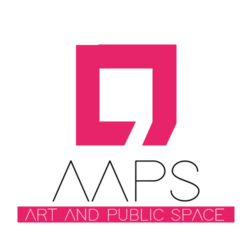Artists: Gunter Frentzel
Text: Ingrid Friedbaum & Santiago Caprio
Sponsorship:
Théâtre St Gervais Geneve
FMAC | Fonds d’art contemporain | Ville de Genève
The city of Geneva, with the support of its Fonds d’art contemporain (WVF) and Théâtre St-Gervais, reactivates an original work of art conceived 25 years ago, back in 1995 by Gunter Frentzel (1935 – 2107).
The infatuation of Frentzel’s work (1935, Berlin) has a unique effect that weighs the fusion of light and heavy, durable and ephemeral.
It is presented as a luminous sculpture, perennial and in situ, this three-dimensional laser “drawing” wants to contain all the activities of this cultural center of Geneva in the form of parentheses that “becomes one” with the building [Klammer in German].
With the simplicity of its chromatic choice in a well-defined green, and with a geometric minimalism to redefine, cut and transform the space in the neighborhood in an abstract, real and imaginary way.
The work is visible and invisible. So he returns to register in the public space with all the poetic force that now integrates absence and presence, his, after more than twenty years of extinction, that of the artist today disappeared and all the creations related to this building.
This is how Art and Public Space renew their perennial marital ties, to welcome the simplicity of the look of the passerby that is simply, flattered and accompanied in their right to recreate and strengthen their citizenship by the hand of Master Frentzel.
Gunter Frentzel is the artist of “Chromstahl”, the one with a cluster of 22 steel bars, starting from a point on the wall with dark bars extending in different vectors to reach the room of light in a really exciting way.
What breathes lightness at first sight, has a total weight of three and a half tons. The bars are slightly bent under the weight of their own weight.
The rods, typical of Frentzel, are not fixed to the wall, but are only inserted into bulges. The construction is massive and fleeting at the same time; she takes herself and, as her title indicates, she relies only on the choir wall, on the artist’s artistic biography, but also on the connection between art and the church and religious images. in which the beams of light and rays were used as symbols of preaching and transcendental knowledge. <Ajar> does not want to convey spiritual messages.
Forezel’s work is strictly rationally, and once again it transcends private space to relate to space. In “Chromstahl” it was sacred to the old church of the monastery more like a wink: tons of heavy lightness but full of mischief, and in “Laser Klammer” it transcends the space of the building to move the Public Space.


